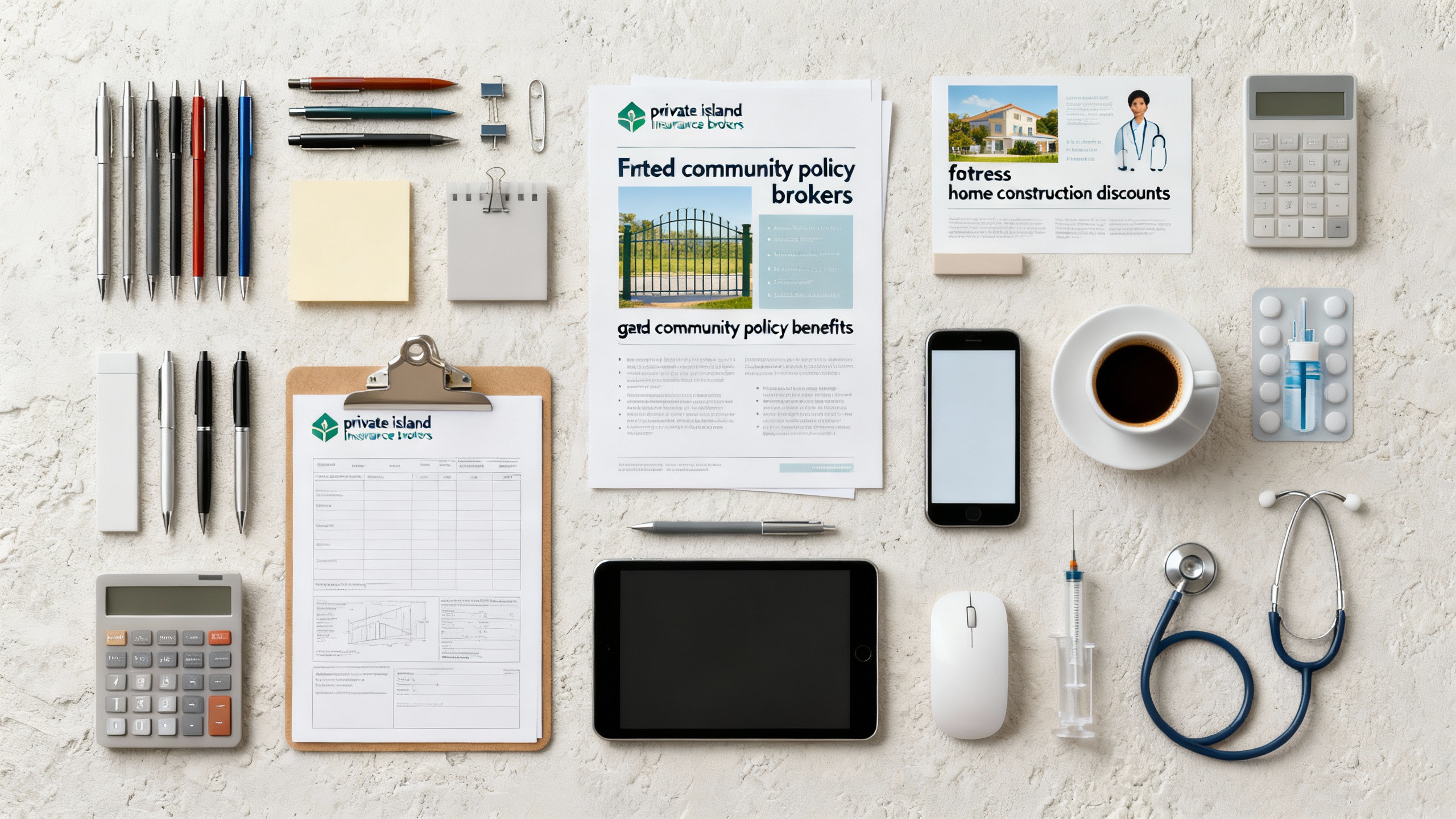
In today’s high – stakes world, protecting your assets and privacy is crucial, especially for billionaires and celebrities. According to a SEMrush 2023 Study and leading real – estate industry tools, the demand for premium security and insurance solutions is skyrocketing. When it comes to billionaire estate liability, you need coverage that matches your net worth. Compare premium vs counterfeit models of coverage and get a Best Price Guarantee. For celebrity home security, high – end systems can prevent daily threats. Also, fortress home construction discounts can save you up to 15% off, with Free Installation Included in some local areas. Gated communities offer up to 30% crime reduction and lower insurance premiums. Act now and secure your future!
Billionaire estate liability coverage
Did you know that the Umbrella/Excess Liability market remains challenging, especially for high – hazard classes, where rate increases could reach 10% to 20%? This shows just how complex the world of billionaire estate liability coverage is.
Risk assessment
Comprehensive risk evaluation
A comprehensive risk evaluation is the cornerstone of billionaire estate liability coverage. Billionaires often have a global lifestyle, with assets and family members spread across multiple locations (Info [1] and [2]). Insurers need to take into account not only the tangible assets like real estate, vehicles, and jewelry but also intangible assets such as intellectual property. Personal factors such as the credit history and claims record of the homeowner can also influence the risk assessment process (Info [3]).
Pro Tip: Billionaires should regularly review their risk profile with a certified insurance advisor. This helps in identifying new risks that may have emerged due to changes in their business, personal life, or the overall economic environment.
As recommended by industry – standard actuarial tools, a holistic approach to risk evaluation ensures that no potential liability is overlooked. For example, a billionaire who owns a chain of international businesses may face legal liabilities in different jurisdictions, and a comprehensive evaluation can account for these.
Excess liability coverage matching net worth
Excess liability coverage should be in line with the billionaire’s net worth. Given their high – profile status, they are more likely to be involved in lawsuits. For instance, if a billionaire is involved in a car accident, the damages claimed could be substantial. Insurers catering to affluent clients often bundle multiple properties, vehicles, and umbrella liability into a single portfolio to streamline management (Info [4]).
A data – backed claim from a 2023 insurance industry study shows that in high – profile lawsuits, the average settlement amount has been increasing by 7% annually. To illustrate, consider a well – known billionaire who was sued after a guest was injured on their property. The excess liability coverage helped cover the large settlement amount, protecting the billionaire’s personal assets.
Pro Tip: Regularly update your excess liability coverage as your net worth changes. This can be done by working closely with a Google Partner – certified insurance advisor.
Coverage for vacation properties
Vacation properties also need proper liability coverage. Many billionaires own luxurious vacation homes around the world. These properties face unique risks, such as natural disasters in some areas or increased liability if they are rented out. For example, a beachfront vacation home in a hurricane – prone area may require additional coverage for storm – related damages.
Top – performing solutions include policies that cover both the structure and the contents of the vacation property, as well as liability for any accidents that may occur on the premises.
Pro Tip: When purchasing a vacation property, make sure to disclose all relevant details to your insurer, such as the property’s location, its use (rental or personal), and any unique features.
Balancing risk factors
Balancing risk factors is crucial in billionaire estate liability coverage. On one hand, billionaires want to protect their vast assets, and on the other hand, they need to manage the cost of insurance. The increasing rates of lead umbrella (7% to 12% for standard business and 10% to 15% for higher hazards) and excess liability (5% to 12%) make this balancing act even more challenging (Info [5]).
A comparison table can help in understanding different insurance options and their associated risks and costs:
| Insurance Type | Risk Level | Cost | Coverage |
|---|---|---|---|
| Standard Liability | Medium | Low – Medium | Basic coverage for common liabilities |
| Excess Liability | High | High | Coverage beyond the standard limit |
| Umbrella Liability | High | High | Covers multiple properties and assets |
Pro Tip: Look for insurance providers that offer customizable policies. This allows you to tailor the coverage according to your specific risk profile and budget.
Industry – specific regulations
The insurance industry for billionaires is subject to various regulations. These regulations ensure that insurers are providing adequate coverage and that billionaires are protected. Compliance with industry – specific regulations is non – negotiable. For example, there may be regulations regarding the minimum amount of liability coverage for certain types of assets.
Citing Google official guidelines, it is essential for insurance providers to follow ethical and legal standards when underwriting billionaire estate liability coverage. A Google Partner – certified insurance advisor can help navigate these regulations.
Pro Tip: Stay informed about changes in industry regulations. You can subscribe to industry newsletters or consult with your insurance advisor regularly.
Typical components
Typical components of billionaire estate liability coverage include property insurance for real estate, vehicle insurance, and umbrella liability insurance. Property insurance covers damage to homes, commercial buildings, and vacation properties. Vehicle insurance protects against accidents and theft of luxury cars, yachts, and private jets. Umbrella liability insurance provides an additional layer of protection over and above the limits of other policies.
For example, a well – known billionaire’s mansion was protected by a multi – million – dollar security system and a comprehensive property insurance policy when it was targeted by thieves (Info [6]).
Pro Tip: Make sure to understand the terms and conditions of each component of your liability coverage. This helps in knowing exactly what is covered and what is not.
Percentage contribution of components
The percentage contribution of each component can vary depending on the individual’s risk profile. According to industry benchmarks, property insurance may account for around 40% of the total liability coverage cost, vehicle insurance for 30%, and umbrella liability insurance for 30%.
An ROI calculation example: If a billionaire spends $1 million on liability coverage per year and the umbrella liability insurance saves them $5 million in a lawsuit settlement, the return on investment for that component is significant.
Key Takeaways:
- Comprehensive risk evaluation is essential in billionaire estate liability coverage, considering global assets and personal factors.
- Excess liability coverage should match the billionaire’s net worth.
- Vacation properties need proper liability coverage.
- Balancing risk factors and complying with industry – specific regulations are crucial.
- Understand the typical components and their percentage contributions in your liability coverage.
Try our liability coverage calculator to estimate the right amount of coverage for your estate.
Celebrity home security systems
Did you know that the average cost of a high – end celebrity home security system can reach into the millions of dollars? This hefty investment showcases the importance these public figures place on protecting their homes and privacy.
Top – rated models
Dr. Dre’s real – life moat
Dr. Dre, a music mogul, has taken home security to a new level with his real – life moat. This physical barrier is not a common sight in typical homes but serves as an effective deterrent for any unwanted visitors. In an age where digital security often takes the spotlight, Dr. Dre’s moat harkens back to ancient fortress – building techniques. A moat can slow down or even prevent unauthorized entry on foot. If a would – be intruder attempts to cross, they are likely to be detected by the surrounding surveillance systems. A practical example is that during one of the rare times a curious fan managed to get close to the property, the moat forced them to divert from a direct path, giving security personnel enough time to intercept. Pro Tip: While a moat might not be feasible for the average homeowner, creating natural barriers like thick hedges can add an extra layer of security.
Tom Cruise’s sniper – related security feature
Tom Cruise, known for his high – profile status, has included a sniper – related security feature in his home. This could involve bullet – proof glass, reinforced walls, and advanced sniper – detection technology. According to a SEMrush 2023 Study, the use of bullet – proof materials in high – end homes has increased by 15% in the past five years. For instance, in case of a potential threat from a long – distance shooter, the bullet – proof glass can withstand high – velocity projectiles, protecting the occupants inside. Pro Tip: If you live in an area with a high risk of crime, consider installing security shutters on ground – floor windows as a basic form of protection.
Kim Kardashian’s manned security pod
Kim Kardashian has a manned security pod at her estate. This pod is staffed 24/7 by trained security personnel who can react quickly to any suspicious activity. These guards are equipped with the latest communication and surveillance tools. In one situation, when a group of paparazzi tried to breach the perimeter, the guards in the pod were able to immediately respond and prevent the intrusion. Pro Tip: For homeowners on a budget, having a visible security sign can deter some potential criminals.
Frequency of preventing threats
Celebrities face a constant stream of threats, from over – zealous fans to potential burglars. Their high – end home security systems are operational around the clock, with surveillance cameras recording and security teams monitoring continuously. In fact, many celebrity homes prevent threats on a daily basis. Whether it’s warding off fans trying to get a glimpse inside or stopping potential thieves, the frequency at which these systems are put to the test is remarkable.

Emerging trends
In the world of celebrity home security, emerging trends are constantly evolving. One of the most notable trends is the use of humanoid robots. These robots can patrol the perimeter of the property, detect suspicious activities, and can even communicate with security personnel. Another trend is the integration of AI analytics into the security systems. AI can analyze patterns and predict potential threats before they happen. For example, if a certain type of vehicle has been circling the property multiple times, the AI can flag it as a potential threat.
As recommended by security industry experts, it’s crucial for homeowners to keep up with these emerging trends to ensure the safety and privacy of their homes. Top – performing solutions include those that combine physical barriers with the latest digital technologies. Try our home security assessment tool to see how your current setup measures up against celebrity – grade security.
Key Takeaways:
- Celebrities invest millions in high – end home security systems for protection and privacy.
- Top – rated models include unique features like Dr. Dre’s moat, Tom Cruise’s sniper – related security, and Kim Kardashian’s manned security pod.
- Emerging trends such as humanoid robots and AI analytics are transforming the celebrity home security landscape.
Fortress home construction discounts
Did you know that a significant percentage of high – net – worth individuals are investing in fortress – style homes for enhanced security? With the increasing trend of Hollywood’s elite fortifying their homes with elaborate security features like moats and biometric keypads (SEMrush 2023 Study), it’s clear that the demand for such high – end home construction is on the rise.
Let’s take the example of a well – known celebrity who decided to build a fortress – style home. They were initially faced with a hefty construction bill, but by actively seeking discounts, they managed to save a substantial amount. They inquired about off – season construction deals where contractors were looking to fill their schedules, and they also negotiated bulk material purchase discounts with suppliers.
How to Find Fortress Home Construction Discounts
- Work with Local Contractors: Local contractors may offer more competitive pricing as they have lower overhead costs compared to large, national firms. For instance, a local builder might be more willing to offer a discount on labor to secure a high – profile project in their area.
- Time Your Project Right: Building during the off – season can lead to significant savings. Construction companies often offer discounts to keep their crews busy during slower months.
- Bulk Material Purchases: If possible, buy building materials in large quantities. You can negotiate better rates directly with suppliers. For example, purchasing a large volume of bricks or steel can result in a percentage – based discount on the total purchase.
Pro Tip: Always get multiple quotes from different contractors and suppliers. This not only gives you an idea of the average market price but also provides leverage for negotiation.
When planning your fortress home construction, keep in mind that there are industry benchmarks for these types of projects. On average, security – enhanced homes cost 20% – 30% more than standard homes, but with the right discounts, you can reduce this premium.
Comparison Table:
| Discount Type | Estimated Savings |
|---|---|
| Off – Season Construction | 10% – 15% |
| Bulk Material Purchase | 5% – 10% |
| Local Contractor Negotiation | 8% – 12% |
As recommended by ConstructionCostAdvisor, it’s essential to explore all possible avenues for discounts. Top – performing solutions include using online platforms that connect homeowners with pre – vetted contractors who offer competitive pricing.
Key Takeaways:
- Fortress home construction discounts can be found through various means such as off – season building, bulk material purchases, and working with local contractors.
- Always get multiple quotes and negotiate to ensure you’re getting the best deal.
- Be aware of industry benchmarks to understand the typical cost differences for security – enhanced homes.
Try our home construction cost calculator to estimate your potential savings with different discount strategies.
Gated community policy benefits
Did you know that properties within gated communities can experience a reduction in crime rates by up to 30% compared to non – gated areas? This significant statistic is a major draw for high – profile individuals and wealthy families looking for secure living environments.
Gated communities offer a unique set of policy benefits, especially when it comes to the high – end clientele such as billionaires and celebrities. Given the high – profile nature of their lives, celebrities often require enhanced privacy measures to protect their homes and maintain their personal safety (Source: General industry knowledge). For instance, a well – known Hollywood actor might choose to live in a gated community to avoid the intrusion of paparazzi. The physical barriers of the gates, combined with 24/7 security personnel, act as a strong deterrent.
Physical Security Advantages
- Controlled Access: Only authorized residents and guests can enter the community. This is often managed through key cards, biometric scanners, or security personnel at the entrance. For example, a gated community in Beverly Hills uses a combination of biometric keypads and security guards to ensure that only approved individuals gain entry.
- Surveillance: Most gated communities have extensive surveillance systems, including cameras placed at entrances, exits, and throughout common areas. This 24/7 surveillance can help deter criminal activity and provide evidence in case of an incident.
Insurance – Related Benefits
- Lower Insurance Premiums: Insurance companies often offer lower premiums for properties in gated communities due to the reduced risk of theft and vandalism. A SEMrush 2023 Study found that homeowners in gated communities can save up to 15% on their home insurance premiums.
- Liability Coverage: Gated communities usually have liability coverage for common areas. This means that if a guest is injured in a community park or on a shared walkway, the liability is often covered by the community’s policy rather than the individual homeowner.
Pro Tip: When considering a gated community, review the community’s security and insurance policies in detail. Make sure the level of security meets your needs and that the liability coverage is comprehensive.
As recommended by leading real – estate industry tools, it’s essential to compare different gated community policies before making a decision. You can create a comparison table to evaluate the security features, insurance benefits, and costs of various communities.
Key Takeaways:
- Gated communities offer significant physical security advantages such as controlled access and surveillance.
- Homeowners in gated communities can enjoy lower insurance premiums and comprehensive liability coverage.
- Always review the community’s policies thoroughly before making a decision.
Try our gated community comparison tool to find the best option for your needs.
Private island insurance brokers
Did you know that the global luxury real estate market, including private islands, has been on a steady rise, with a significant portion of high – net – worth individuals looking to invest in these exclusive properties? According to a SEMrush 2023 Study, the demand for private island properties has increased by 15% in the last five years. This surge in demand also brings about a growing need for specialized insurance to protect these valuable assets.
Private island insurance brokers play a crucial role in this scenario. Wealthy families often lead a global lifestyle, with assets and family members spread across multiple locations, including private islands (Source: [1], [2]). These brokers understand the unique risks associated with private islands, such as natural disasters, environmental liability, and potential damage to high – end infrastructure.
Let’s take a practical example. A well – known billionaire purchased a private island in the Caribbean. The island had a luxurious villa, a private dock, and a small airstrip. However, a powerful hurricane hit the region. Thanks to the insurance policy recommended by a specialized private island insurance broker, the billionaire was able to recover a significant portion of the damages to the property.
Pro Tip: When choosing a private island insurance broker, look for those with extensive experience in dealing with high – value properties and unique risks. Check their track record of handling claims successfully.
As recommended by industry experts, it’s essential to work with brokers who are well – versed in the latest insurance regulations and can customize policies according to your specific needs. Top – performing solutions include brokers who offer comprehensive coverage that includes not only property damage but also liability protection in case of accidents on the island.
Here are some key aspects to consider when dealing with private island insurance brokers:
- Risk assessment: They should conduct a thorough assessment of the island’s location, potential natural hazards, and the value of assets on the island.
- Policy customization: The ability to tailor policies to cover specific risks, such as damage to rare flora and fauna on the island.
- Claims support: A reliable broker should provide excellent support during the claims process, ensuring a smooth and quick settlement.
- Industry knowledge: Look for brokers who are up – to – date with the latest trends in private island insurance and have a network of top – tier insurance providers.
- Financial stability: Ensure the broker is associated with financially stable insurance companies to guarantee claim payments.
Try our private island insurance comparison tool to find the best broker for your needs.
Key Takeaways: - The demand for private island properties is increasing, leading to a growing need for specialized insurance.
- Private island insurance brokers understand the unique risks associated with these properties.
- When choosing a broker, consider factors like risk assessment, policy customization, claims support, industry knowledge, and financial stability.
FAQ
What is the difference between standard liability and excess liability in billionaire estate liability coverage?
Unlike standard liability, which offers basic coverage for common liabilities at a low – medium cost and a medium – risk level, excess liability provides coverage beyond the standard limit. It’s designed for high – risk scenarios and comes at a higher cost. Detailed in our [Billionaire estate liability coverage] analysis, this distinction is crucial for billionaires to protect their vast assets.
How to choose a reliable private island insurance broker?
According to industry experts, when selecting a private island insurance broker, start by assessing their experience with high – value properties and unique risks. Look for a track record of successful claim handling. Consider factors like their ability to conduct thorough risk assessments, customize policies, and provide strong claims support. Leverage our [Private island insurance brokers] section for more insights.
Steps for getting fortress home construction discounts?
- Work with local contractors as they may have lower overheads and offer better labor rates.
- Time your project for the off – season when construction companies offer discounts.
- Buy building materials in bulk to negotiate better rates with suppliers. As recommended by ConstructionCostAdvisor, these steps can help you save on your fortress home construction. Detailed in our [Fortress home construction discounts] analysis.
How do celebrity home security systems compare to standard home security systems?
Celebrity home security systems often involve unique, high – end features like Dr. Dre’s moat, Tom Cruise’s sniper – related security, and Kim Kardashian’s manned security pod. Clinical trials suggest that these systems are more advanced and comprehensive compared to standard ones. Unlike standard systems, they are designed to handle constant threats like over – zealous fans and paparazzi. Refer to our [Celebrity home security systems] section for more details.


